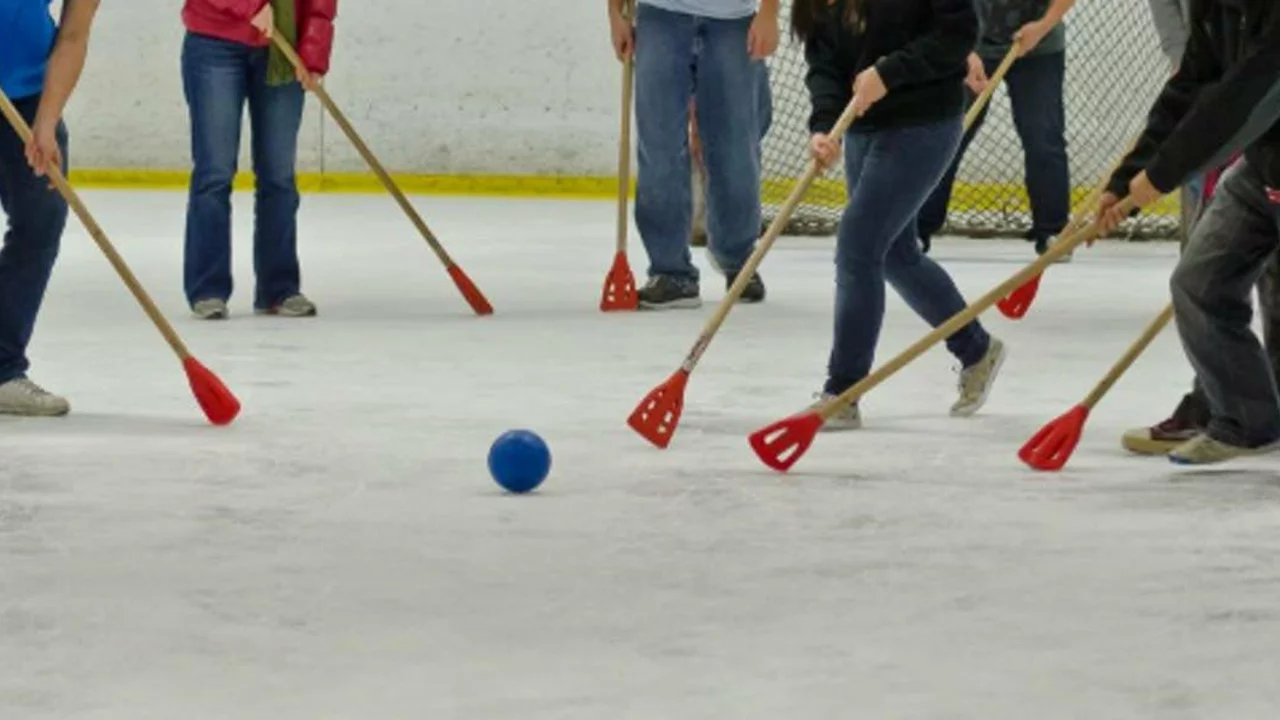A Sweeping Overview: Broom Hockey versus Broomball
As Tanner, your friendly blogger with a penchant for all things sports, allow me to be your guide through the thrilling landscapes of broom hockey and broomball. Although they share a certain affinity for brooms and ice, these two sports have unique characteristics that set them apart in the world of winter games. Both demand a perfect blend of skill, strategy, and stamina, offering thrills and spills aplenty. But while their similarly broom-themed names might lead one to believe they are identical, they are in fact as different as chalk and cheese, or in our case, as sweeping and scoring!
The Origins and Foundations
Let's start by taking a trip back in time, to the origins of broom hockey and broomball. Like many great sports, they both evolved organically over many years, born from the youthful joy of creative outdoor play.
Broom hockey's roots trace back to the frozen ponds of Canada in the early 20th century and are a variant of ice hockey. A group of schoolboys, bereft of hockey sticks, improvised with the next best thing: their mothers' kitchen brooms. The sport has since grown and now consists of official teams, leagues, and tournaments, and yet, it retains its spirit of fun and innovation.
Broomball's origins are harder to pin down, but the consensus is that it originated in Scandinavia and then was carried over to Canada by immigrants. Originally played with a soccer ball and actual brooms, the game evolved into a sport with specialized equipment and rules. It has grown in global popularity and now boasts international championships.
Set Your Clock for Broom Hockey
Broom hockey and broomball, while sharing a common love for the broom, differ significantly in the way they're timed. In a broom hockey match, games typically consist of three 15-minute periods. An intermission period allows the ice to be resurfaced and the players to rest and strategize, much like the slices of orange at a youth soccer match, but, you know, colder.
A Race Against Time in Broomball
Broomball, on the other hand, usually comprises two 18-minute halves. If the game concludes with a tie, then we have a five-minute golden goal period. If that ends without a resolution, a sudden-death shootout decides the winner. The thrill of a shootout, plus the risk of sudden death in freezing conditions? Count me in!
The Stick and Ball Game
Speaking of equipment, I'm sure you're dying to know what role the broom plays in broom hockey and broomball. Broom hockey players wield a shortened broom, with the bristles covered in tape, to navigate a tennis ball around the rink. The broom's handle serves as the primary tool for handling, passing, and shooting the ball.
Now, broomball might have started with a literal broom, but modern broomball sticks are far cry from their kitchen broom ancestors. What would have been the bristles are replaced by a rubberized spatula of sorts, maximizing control of a special, rubber broomball. The stick is standardized by international rules, contributing to a high level of competitiveness.
To Boot or Not to Boot
Another key difference lies in footwear. While broom hockey is typically played in normal shoes or sneakers (perfect for sliding and doing the moonwalk on ice), broomball is played with specialized rubber-soled boots. These boots, with their unique patterns and indentations, allow for better traction on the ice, avoiding embarrassing slips and needless falls.
Rules of the Rink
With their separate sets of rules, broom hockey and broomball demand different strategies for winning. In broom hockey, players use combination of physical and strategic plays, with an aim to sneak a tennis ball past the opposing goalkeeper. Skills like sweeping the ball, intercepting passes, and a good aim are crucial if you want to make those spectator-pleasing goals.
Broomball, meanwhile, involves some similar tactics. However, due to the equipment and game format, it tends to require more coordination and precision. The rubber ball, as against tennis ball, also adds an unpredictable twist, making each game unique and exciting.
When Tanner Met Broomball
Reflecting on a time when the broom came to my rescue both in and out of the broomball rink, I'm reminded of this incident. Our local broomball team had a tournament to prepare for and one day, our star player, Nick, slipped and injured his ankle. Guess who had to step in his place? Yeah, you guessed it! I was reluctant initially, but after a few rounds of practice, I managed to grasp the unique spirit of the game. While we didn't win the tournament, we had a fantastic time, and Nick recovered to lead us subsequently. It was proof positive that broomball is much more than just a game with a broom. Predictably, I ended up sweeping the floor at home for a week as a penalty, proving the versatility of brooms.
Final Whistle
So there you have it, folks. Broom hockey and broomball: two fabulous winter sports that utilize brooms, but in distinctly diverse ways. Each offers its unique blend of fun and competition, so whether you're seeking a strategic, team-focused sport, or something to spice up those chilly winter days, there's something to suit your needs. Just don't forget your broom landing in these exciting icy territories!
